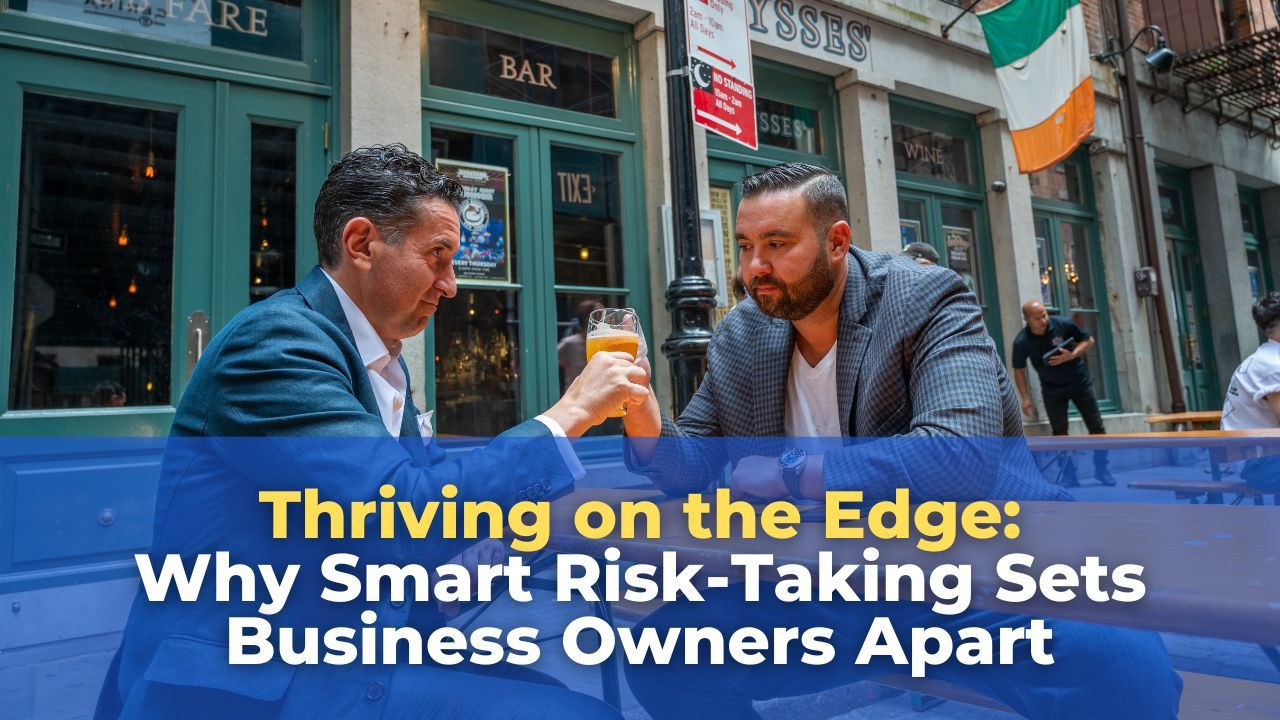Thriving on the Edge: Why Smart Risk-Taking Sets Business Owners Apart

Being a business owner is like riding a roller coaster; there are plenty of exhilarating highs…and just as many stomach-churning lows. You’ll be having the time of your life one minute, and the next, you’ll think, WTF am I doing? You need a strong stomach, be willing to take risks, and accept that the whole thing might crash and burn.
Of course, that’s easier said than done. Because it’s one thing to TALK about hypothetical dollars used, resources exhausted, hours spent, and all the what-ifs and maybes.
It’s quite another thing to put all that talk into action.
But that’s what separates the Greats from the Really Greats. You think Elon, Bezos, or Jobs achieved what they did from pure dumb luck? Hardly. They took calculated risks. They were willing to push boundaries and redefine what is possible. And while your plans might not be as ambitious as starting your own aerospace or logistics company, you can still take a page from their books. They recognized the perils of playing it safe; it may shield you from failure, but it can also hinder progress and ingenuity.
To help you navigate the realm of risks, here's a five-part test to determine if a leap is worth taking.
The Five-Part Test:
- Does the risk align with your overall business strategy and objectives? Evaluate how the risk fits into your long-term vision and aspirations. Will it push you closer to achieving your goals? Or will it prove to be a distraction? Be wary of sexy, flash-in-the-pan opportunities that serve you no real purpose and will only leave you burnt.
- Assess the potential outcomes, both positive and negative. Envision how the risk might unfold, and write down everything that could go wrong along the way. Do you have the time, energy, resources, or finances to deal with what’s on that list? Remove your rose-colored glasses and try to remain objective.
- Does your team possess the necessary skills and resources to handle the risk? For example, if you’re venturing into a new market, assess if your team has the necessary market research, sales, and marketing skills to navigate and compete in that space effectively. Is your team flexible, proactive, and open to change? Do they have the technological capabilities, workforce, or physical assets required for this risk? Do they work well together and communicate effectively? Evaluating where your team stands and then preparing them to face the challenges that may arise can make all the difference.
- Gather relevant data and facts to inform your decision-making. Take a look at market research, industry trends, customer insights, financial data, and any other information pertinent to the risks you are considering. Data-driven decision-making reduces uncertainty and improves the likelihood of making strategic choices that align with your goals. Data and facts will also help you mitigate personal biases and identify patterns and trends that allow you to stay ahead of the curve and adapt your strategies. However, don't let data paralysis consume you. Trust your judgment and experience while using data as a valuable tool to enhance decision-making rather than allowing it to become a hindrance.
- Finally, listen to your gut feeling. Facts and figures can guide your decision-making but don't underestimate the power of your gut. While data provides valuable insights, it may not capture all nuances or account for unforeseen circumstances. Things in life are rarely black and white. Trust your instincts - they’ve helped you this far.
Thriving on the edge is a trait that sets successful business owners apart, and it stems from their ability to engage in intelligent risk-taking. Despite the uncertainty and the possibility of failure, savvy entrepreneurs understand that calculated risks can lead to exceptional rewards.
Using this five-part test can help you seize competitive advantages, adapt to changing market dynamics, and capitalize on emerging trends. It’s like they say, “no risk, no reward,” right? Don’t let fear stifle growth, innovation, and those amazing "Eureka!" moments. Do your homework. Follow your gut. And if it feels right and looks right, go all in, baby.



